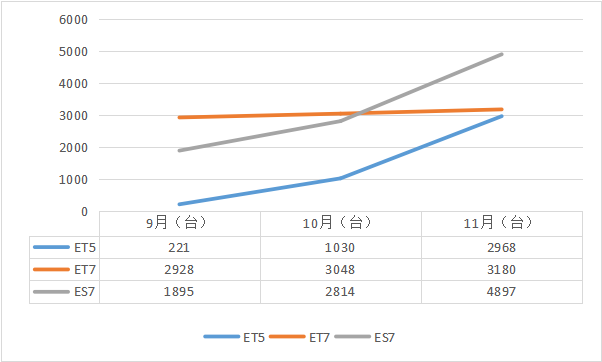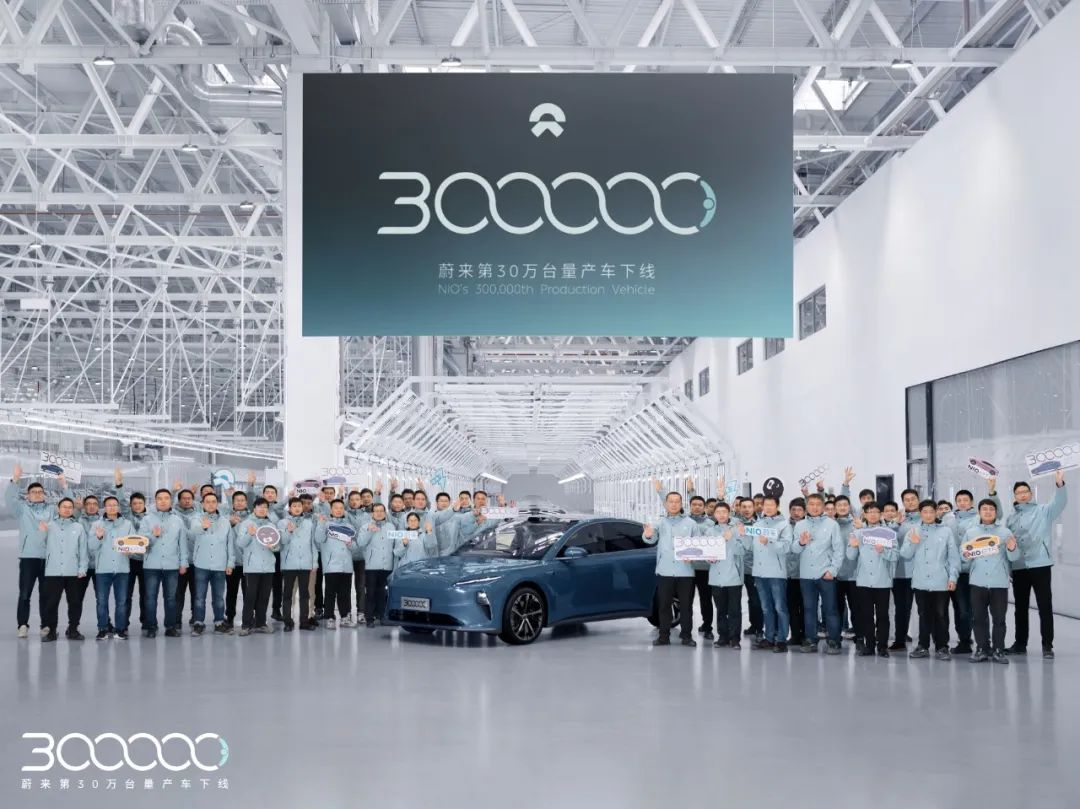Writing by: Zhang Ruichen
Editing by: Wu Xianzhi
On December 12th, NIO officially announced that the 300,000th mass-produced car of NIO had been produced.
From the first mass-produced car of NIO, which was rolled off on May 27th, 2018, to July 18th, 2020, it took 783 days to reach the milestone of producing 50,000 units.
On April 7th, 2021, only 263 days since the milestone of 50,000 units, NIO celebrated the production of their second 50,000th unit. In less than three years, NIO has completed its first 100,000 units of mass production.
In April 2022, NIO announced the delivery of the second 100,000 units of mass production in just one year.
Today, after merely seven months, NIO has reached the milestone of producing 300,000 units of mass production. NIO once again refreshes the speed of mass production of high-end brands of new energy vehicles in China.
What contributes to the production of NIO’s 300,000 units? We summarise the following key factors.
1. Rapid growth of new energy
Today, the development speed of new energy vehicles in China is very fast. According to statistics on the market share of new energy vehicles in the Chinese automobile market, the penetration rate has reached 27.4% (as of November). The penetration rate of new energy has exceeded 30% for two consecutive months, which only took one year from breaking through 20% to breaking through 30%.
As one of the first new forces in China’s new energy vehicles, NIO has captured a large number of users with its excellent technology, excellent after-sales service, etc. From 2022 to present (January to November), NIO’s transaction price for high-end pure electric vehicles above 400,000 CNY accounted for more than 70% of the market.
2. NIO’s full stack self-research
NIO states that the production of the 300,000th mass-produced car is an indication of NIO’s adherence to full stack self-research.
NIO’s self-research achievements in three electric areas, intelligent systems, and ICC have made its products highly competitive in the market. Especially NIO’s outstanding performance in the battery swap model has already led many peers to imitate. NIO also states that they will continue to carry out deep self-research in core technologies such as batteries and chips.
In 2022, relying on NIO’s second-generation technology platform NT2, three new car models, including ET5, ET7, and ES7, will achieve delivery, and the delivery volume of the three models is steadily increasing.
NIO also announced that they plan to launch five car models in the first half of 2023 to meet the diverse needs of users.
Three, globalization strategy
NIO has been a global company since its inception, using global talent and supply chains to provide high-end products and services to global users.
In September 2021, NIO entered the Norwegian market, and the NIO ES8 has become the top three best-selling SUV models in the Norwegian market for 6 and 7 seats.
On October 8th of this year, NIO announced the launch of services in Germany, the Netherlands, Sweden and Denmark, and then began to deliver the ET7 in four countries overseas. The ES7 (named EL7 in overseas markets) and ET5 will also enter these four markets soon.
The European market is just the first step in NIO’s globalization, and NIO continues to accelerate the layout of global business, constantly exporting high-end product power and overall service to global markets.
Four, user system construction
In terms of sales channels, NIO has added nearly 200 stores in 2021, and this number will continue to expand this year. So far, NIO has established 395 NIO Centers or NIO Spaces globally, as well as 1263 battery-swapping stations, 12785 charging piles, and access to more than 998,000 third-party charging piles.
NIO’s real moat is the long-term recognition and support of a large number of users. NIO has always attached great importance to user experience, and its user service system has made an indelible contribution to sales growth. NIO’s user service system can be roughly divided into three categories: car purchase (delivery) service experience, car use service experience, and community service experience.
In terms of car purchase (delivery) service experience: one-on-one after-sales service, exclusive delivery service group, delivery exclusive consultant, delivery ceremony, and exclusive service group for car use, etc.
For car use service experience: lifelong free quality assurance, roadside assistance, battery-swapping, vehicle networking services, as well as driving enjoyment services and cross-region charging rights, etc. In addition, there are a series of service rights, including insurance, repair, maintenance pickup and delivery, tire repair, and point returns.Community Service Experience: NIO Center Community has built a joyful and growing lifestyle for NIO users to share.
In conclusion, the offline production of 300,000 NIO vehicles undoubtedly demonstrates consumers’ high recognition of the NIO brand. NIO has also solidified its position in the field of new energy in terms of technology and services and is likely to reach a new milestone of delivering more than 500,000 production vehicles by 2023.
This article is a translation by ChatGPT of a Chinese report from 42HOW. If you have any questions about it, please email bd@42how.com.
